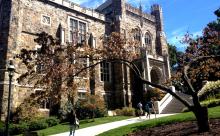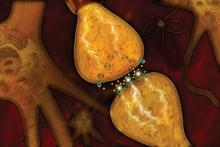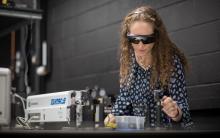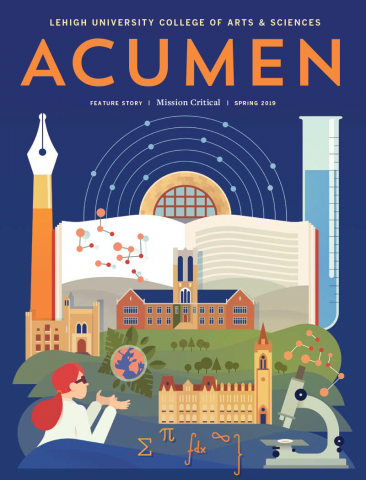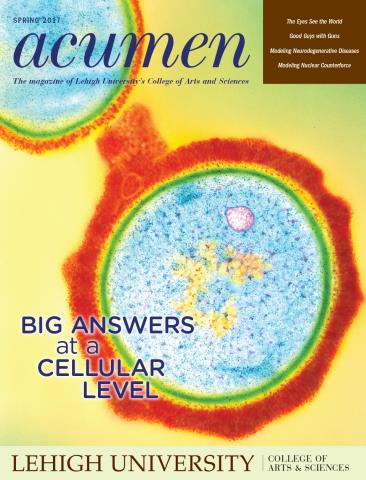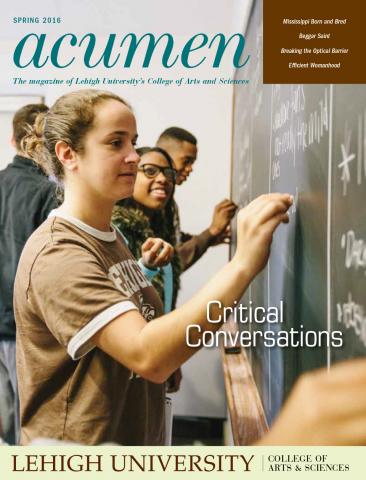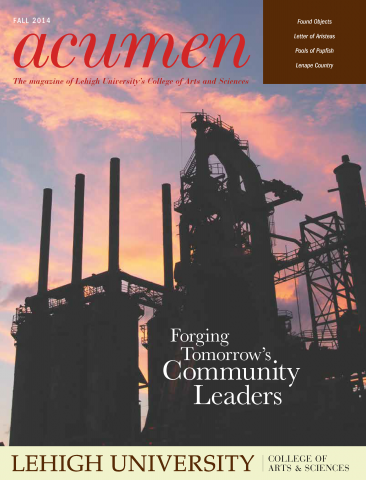
Using sunlight to drive chemical reactions is an attractive way to harness energy from the sun and use it to benefit society. Chemists play a key role in designing and fundamentally understanding reactions that could incorporate this solar energy-harvesting strategy, including Lehigh’s newest chemistry faculty member, Elizabeth Young.
Young, who joined the department last fall, is an experimental physical chemist who uses a sophisticated laser system to initiate and track many types of chemical reactions. She studies how molecular structure influences their properties. The goal of her work is to correlate how the properties of specific molecules influence how they function in chemical reactions or how they combine with other molecules in man-made devices, such as solar cells.
“There are a number of ways to use photons (small packets of light) to do interesting things, either in photovoltaic applications or in designing reactions to make beneficial products for society,” says Young, assistant professor of chemistry. “One thing we do is to create models inspired by biology. Biology does these complex chemical reactions all the time! Nature moves around positive and negative charges and carries out many kinds of chemical reactions that enable plants and animals to survive and thrive. In our research, we make model systems that are simpler but possess key properties that are similar to those biological molecules. This work allows us to study the relationship between thermodynamics—the energy that a reaction needs to happen—and the kinetics—how fast the reaction happens. Further, we design our model systems so they are light initiated, which means we use energy from light to carry out our reaction. This design feature brings two advantages—one, we could eventually use solar energy to carry out reactions, and two, we can use lasers to study these reactions in great detail.”
Using funding from the National Science Foundation, Young and her team acquired a transient absorption laser system that can be used to track the rates of these reactions. Young uses this laser to produce short 150-femtosecond-long pulses. To put that in perspective, one femtosecond is one millionth of one billionth of a second. The laser pulse initiates a reaction Young wants to measure and tracks the chemical reaction as it happens. The data generated by the laser system provides her with information about the products formed during the reaction and how quickly they are formed.
Young also explores using organic molecules (think dyes in your clothing or chlorophyll in plants) in photovoltaic (PV) cells. Organic PVs are attractive as an alternative to silicon-based solar cells because they can be lightweight and deposited on flexible substrates and are made of inexpensive materials. The focus of work in the Young lab will be to measure and understand kinetic processes at play in organic PVs. In organic PVs, light from the sun must be absorbed and eventually converted into electricity. On the molecular scale, there are a lot of steps that must occur for this to happen, and each step must be intimately understood in order to keep improving, she says.
“If we can take energy from the sun and do interesting and useful things for society,” Young says, “that’s a good way to drive our energy economy in the future.”

